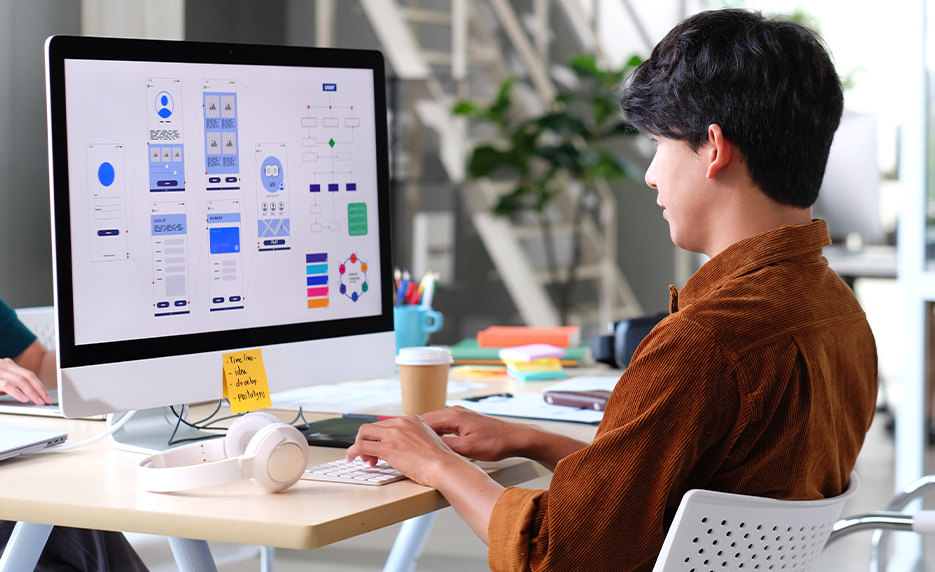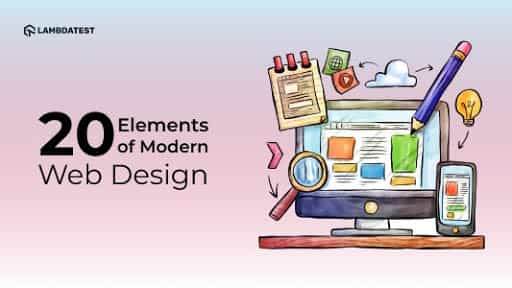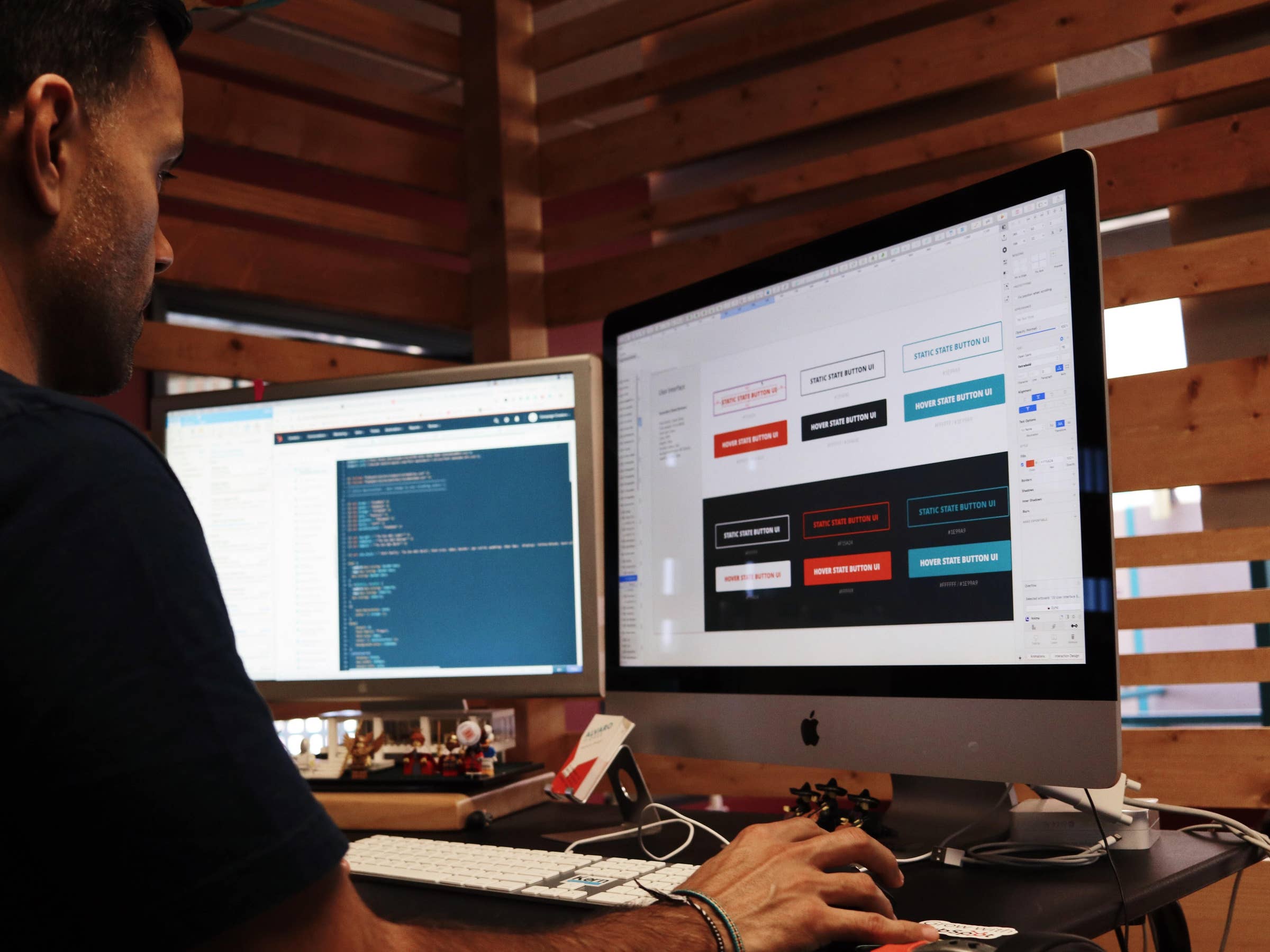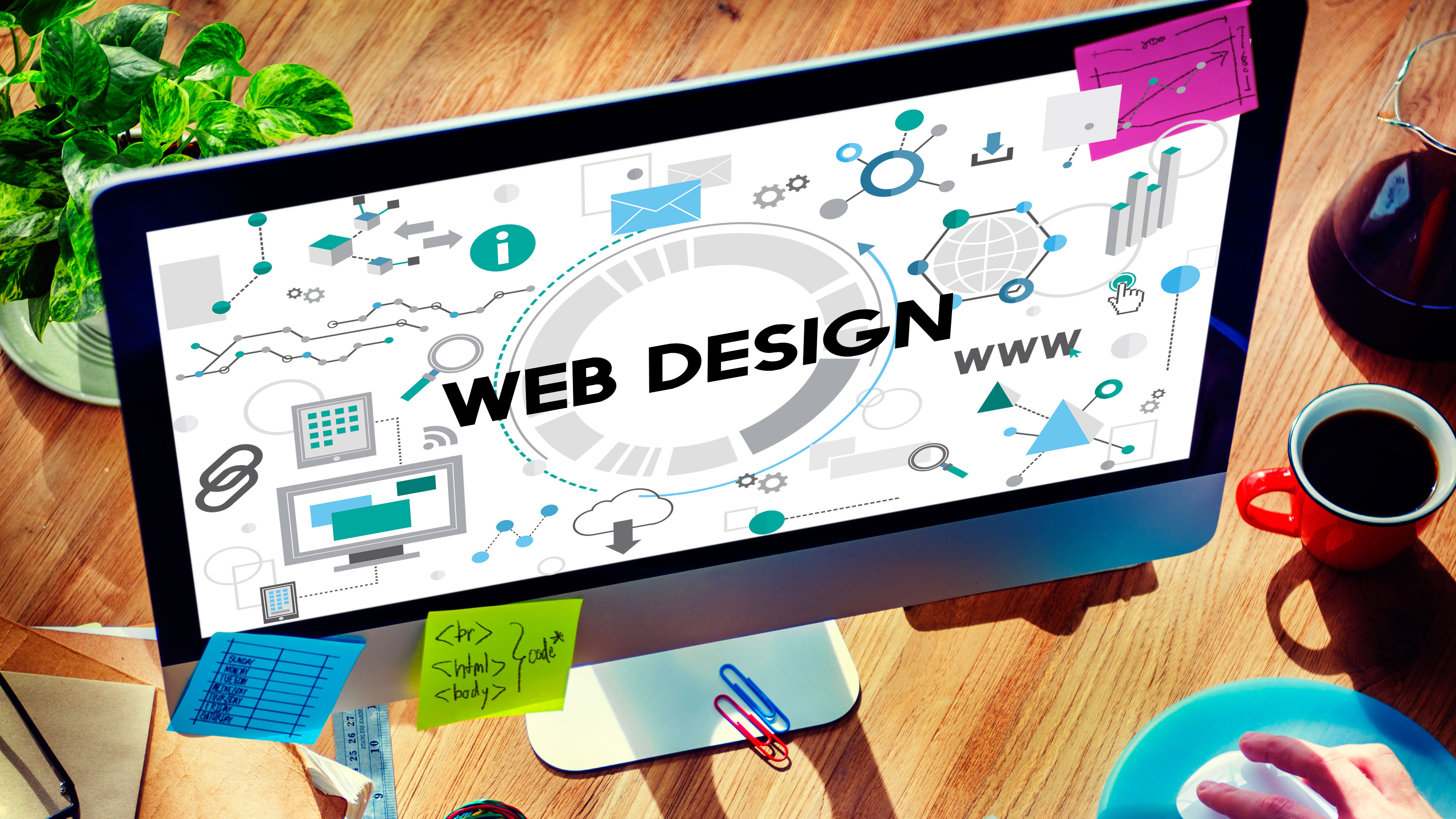All Categories
Featured
Table of Contents
- – Otc Web Design Girdwood, Alaska - Web Design &...
- – Sustainable Web Design: Home Tips and Tricks:
- – Beginner's Guide: How To Learn Web Design At ...
- – Web Design Definition - Techterms Tips and Tr...
- – Web Developers And Digital Designers - Bureau...
- – Top 30 Web Design Companies - Apr 2022 - Desi...
- – Collaborate & Create Amazing Graphic Design ...
- – The Leader In Website Design – Squarespace T...
- – 12 Essential Tips For Improving Your Web Des...
- – The Top 10 Most Important Elements Of A Webs...
- – Trajectory: Atlanta Web Design Company Tips ...
Otc Web Design Girdwood, Alaska - Web Design & Google ... Tips and Tricks:
Quick summary Usability and the utility, not the visual design, determine the success or failure of a site. Given that the visitor of the page is the only individual who clicks the mouse and therefore decides whatever, user-centric style has developed as a basic approach for successful and profit-oriented website design - web design frederick md.
and the energy, not the visual style, determine the success or failure of a site. Since the visitor of the page is the only person who clicks the mouse and therefore chooses whatever, user-centric style has ended up being a standard approach for successful and profit-oriented website design. If users can't use a feature, it might as well not exist.
g. where the search box ought to be positioned) as it has already been carried out in a number of articles; instead we concentrate on the methods which, utilized correctly, can cause more sophisticated design decisions and simplify the process of perceiving provided information. Please notice that you may be thinking about the usability-related articles we've published prior to: Concepts Of Good Website Style And Reliable Website Design Guidelines, In order to use the principles appropriately we first require to comprehend how users interact with sites, how they think and what are the basic patterns of users' behavior.
Sustainable Web Design: Home Tips and Tricks:
Visitors glimpse at each new page, scan some of the text, and click the first link that captures their interest or slightly resembles the thing they're trying to find. In reality, there are large parts of the page they don't even take a look at. Most users look for something intriguing (or helpful) and clickable; as quickly as some promising candidates are discovered, users click.
If a page supplies users with premium content, they want to jeopardize the material with ads and the design of the website. This is the factor why not-that-well-designed websites with top quality material acquire a great deal of traffic over years. Material is more crucial than the style which supports it.

Users don't check out, they scan. Notice how "hot" locations abrupt in the middle of sentences. This is normal for the scanning process. Very basic principle: If a site isn't able to satisfy users' expectations, then designer failed to get his task done appropriately and the company loses cash. The greater is the cognitive load and the less intuitive is the navigation, the more prepared are users to leave the website and look for alternatives.
Beginner's Guide: How To Learn Web Design At Home - Medium Tips and Tricks:
Neither do they scan website in a direct style, going sequentially from one site section to another one. Rather users satisfice; they choose the first reasonable option. As soon as they find a link that looks like it might result in the objective, there is a really good opportunity that it will be right away clicked.
It doesn't matter to us if we comprehend how things work, as long as we can use them. If your audience is going to imitate you're developing signboard, then style excellent billboards." Users wish to be able to manage their browser and rely on the constant information discussion throughout the website.
If the navigation and website architecture aren't intuitive, the variety of concern marks grows and makes it harder for users to comprehend how the system works and how to obtain from point A to point B. A clear structure, moderate visual ideas and quickly recognizable links can help users to find their path to their goal.
Web Design Definition - Techterms Tips and Tricks:

claims to be "beyond channels, beyond items, beyond distribution". What does it mean? Because users tend to check out sites according to the "F"-pattern, these three declarations would be the first aspects users will see on the page once it is loaded. Although the style itself is easy and intuitive, to comprehend what the page is about the user needs to browse for the answer.
When you've attained this, you can communicate why the system works and how users can take advantage of it. People will not utilize your website if they can't find their method around it. 2. Don't Squander Users' Persistence, In every project when you are going to provide your visitors some service or tool, try to keep your user requirements minimal.
Newbie visitors want to, not filling long web types for an account they might never use in the future. Let users explore the website and discover your services without requiring them into sharing personal information. It's not reasonable to force users to enter an email address to test the function.
Web Developers And Digital Designers - Bureau Of Labor ... Tips and Tricks:
And that's what you want your users to feel on your web site. The registration can be done in less than 30 seconds as the kind has horizontal orientation, the user does not even require to scroll the page.
A user registration alone is adequate of an obstacle to user navigation to reduce incoming traffic. 3. Manage To Focus Users' Attention, As sites supply both static and dynamic content, some elements of the interface bring in attention more than others do. Clearly, images are more captivating than the text simply as the sentences marked as vibrant are more attractive than plain text.
Focusing users' attention to specific locations of the site with a moderate usage of visual components can help your visitors to receive from point A to point B without thinking of how it in fact is supposed to be done. The less enigma visitors have, the they have and the more trust they can develop towards the company the site represents.
Top 30 Web Design Companies - Apr 2022 - Designrush Tips and Tricks:
4. Strive For Feature Direct exposure, Modern web styles are typically criticized due to their method of directing users with aesthetically appealing 1-2-3-done-steps, big buttons with visual results and so on. But from the design viewpoint these aspects in fact aren't a bad thing. On the contrary, such as they lead the visitors through the website material in a really simple and user-friendly way.
The website has 9 main navigation options which are noticeable at the very first glance. What matters is that the content is well-understood and visitors feel comfortable with the method they interact with the system.
Rather a cost: just what visitors are looking for. An ideal option for reliable writing is touse brief and concise expressions (come to the point as rapidly as possible), usage scannable layout (classify the content, utilize numerous heading levels, utilize visual components and bulleted lists which break the circulation of uniform text blocks), usage plain and unbiased language (a promo does not need to sound like ad; give your users some sensible and unbiased factor why they must utilize your service or stay on your site)6.
Collaborate & Create Amazing Graphic Design For Free Tips and Tricks:
Users are hardly ever on a site to enjoy the design; moreover, for the most part they are searching for the info regardless of the design - web design frederick md. Pursue simpleness instead of intricacy. From the visitors' viewpoint, the very best site style is a pure text, without any advertisements or additional content blocks matching precisely the query visitors used or the content they have actually been trying to find.
Finch plainly provides the details about the site and gives visitors an option of alternatives without overcrowding them with unnecessary material. Not only does it help to for the visitors, however it makes it possible to perceive the info presented on the screen.
Complex structures are harder to read, scan, evaluate and deal with. If you have the choice in between separating two design sectors by a noticeable line or by some whitespace, it's typically much better to utilize the whitespace option. (Simon's Law): the better you manage to supply users with a sense of visual hierarchy, the easier your material will be to perceive.
The Leader In Website Design – Squarespace Tips and Tricks:
The same conventions and guidelines should be used to all elements.: do the most with the least quantity of hints and visual components. Clearness: all components ought to be created so their significance is not uncertain.
Conventions Are Our Friends, Traditional design of website aspects doesn't result in an uninteresting website. As they minimize the discovering curve, the need to figure out how things work. For instance, it would be an usability problem if all sites had different visual presentation of RSS-feeds. That's not that various from our regular life where we tend to get used to fundamental concepts of how we organize data (folders) or do shopping (positioning of products).
understand what they're getting out of a site navigation, text structure, search positioning etc. A typical example from usability sessions is to translate the page in Japanese (assuming your web users do not know Japanese, e. g. with Babelfish) and offer your usability testers with a task to discover something in the page of various language.
12 Essential Tips For Improving Your Web Design In 2022 Tips and Tricks:
Steve Krug recommends that it's better to, however make the most of conventions when you do not. 10. Test Early, Test Frequently, This so-called TETO-principle must be applied to every website design job as functionality tests typically supply into considerable issues and issues associated with a given layout. Test not far too late, not too little and not for the incorrect reasons.
Some essential points to keep in mind: according to Steve Krug, and screening one user early in the project is better than screening 50 near completion. Accoring to Boehm's first law, mistakes are most frequent throughout requirements and design activities and are the more costly the later they are eliminated.
That means that you develop something, test it, fix it and then evaluate it again. There may be problems which have not been discovered during the first round as users were almost blocked by other problems.
The Top 10 Most Important Elements Of A Website Design Tips and Tricks:

This holds for designers. After you've dealt with a site for few weeks, you can't observe it from a fresh point of view anymore. You understand how it is developed and therefore you understand exactly how it works you have the knowledge independent testers and visitors of your website would not have.
It can be connected to other areas such as graphic style, user experience, and multimedia arts, however is more aptly seen from a technological standpoint. It has actually ended up being a big part of people's daily lives. It is tough to imagine the Web without animated graphics, various styles of typography, background, videos and music.

During 1991 to 1993 the Internet was born. Text-only pages might be seen utilizing a simple line-mode internet browser. In 1993 Marc Andreessen and Eric Bina, developed the Mosaic web browser. At the time there were multiple web browsers, nevertheless the majority of them were Unix-based and naturally text heavy. There had actually been no integrated technique to graphic style elements such as images or noises.
Trajectory: Atlanta Web Design Company Tips and Tricks:
The W3C was created in October 1994 to "lead the World Wide Web to its full potential by establishing common protocols that promote its evolution and guarantee its interoperability." This dissuaded any one business from monopolizing a propriety internet browser and programming language, which might have modified the impact of the Web as a whole.
As this has actually occurred the innovation of the web has actually likewise moved on. There have likewise been substantial changes in the way individuals utilize and access the web, and this has changed how websites are developed.
Learn more about Lovell Media Group LLC or TrainACETable of Contents
- – Otc Web Design Girdwood, Alaska - Web Design &...
- – Sustainable Web Design: Home Tips and Tricks:
- – Beginner's Guide: How To Learn Web Design At ...
- – Web Design Definition - Techterms Tips and Tr...
- – Web Developers And Digital Designers - Bureau...
- – Top 30 Web Design Companies - Apr 2022 - Desi...
- – Collaborate & Create Amazing Graphic Design ...
- – The Leader In Website Design – Squarespace T...
- – 12 Essential Tips For Improving Your Web Des...
- – The Top 10 Most Important Elements Of A Webs...
- – Trajectory: Atlanta Web Design Company Tips ...
Latest Posts
Awwwards - Website Awards - Best Web Design Trends Tips and Tricks:
Website Design - Best Ecommerce Web Design By Shopify Tips and Tricks:
Web Design Shopify:
More
Latest Posts
Awwwards - Website Awards - Best Web Design Trends Tips and Tricks:
Website Design - Best Ecommerce Web Design By Shopify Tips and Tricks:
Web Design Shopify: